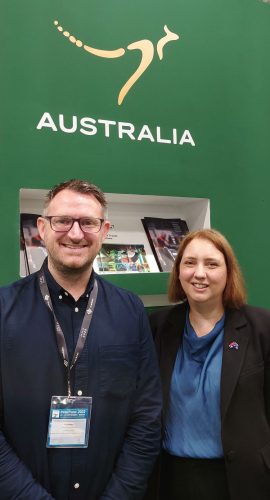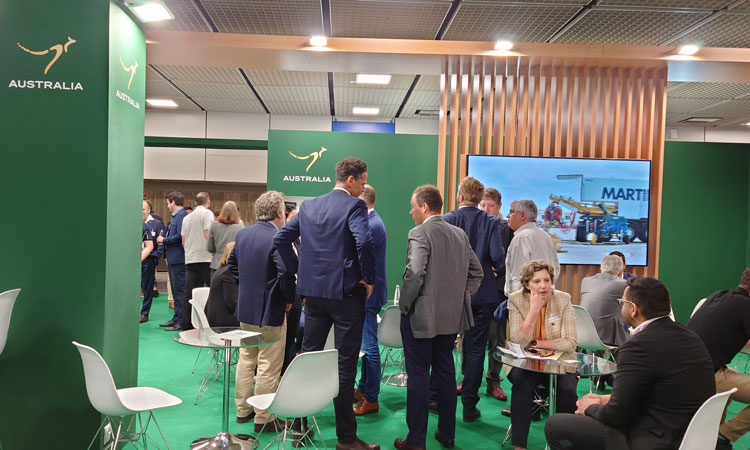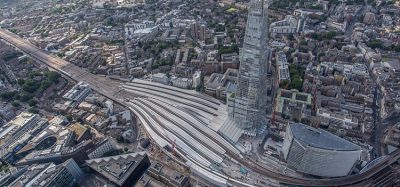Q&A with Joeley Pettit, ARA: Supporting the development of rail in Australia
Posted: 6 October 2022 | Craig Waters (Editor - Global Railway Review) | No comments yet
At InnoTrans 2022, Global Railway Review Editor, Craig Waters, met with Joeley Pettit, Director of Corporate Affairs, Passenger Rail and Sustainability from the Australasian Railway Association (ARA), to discover Australia’s vision for the future of rail, and what strategies will be key in achieving these ideas.
What do you consider to be the vision of the railway industry in your region?
In Australia, rail is playing a crucial role in supporting our sustainable future. Currently, there’s a huge wave of growth happening in Australia. There’s around $155 billion in rail investment planned over the next 15 years, which will really support Australia’s growth and development for many years to come. There is a real opportunity for rail to be a part of how we develop our cities and communities, to shape how we achieve more sustainable outcomes and more sustainable lifestyles over the long-term. So, I think that is really a strong focus for the industry right now.
How can that vision become a reality?


Craig Waters, Global Railway Review, with Joeley Pettit, Australasian Railway Association, at InnoTrans 2022.
The market in Australia is very fragmented. We obviously have the hallmarks of a federated system, where most of our rail industry is operated at the state or territory level, effectively meaning we have eight different industries within one country. So, achieving harmonisation across those sectors is important to ensure we are consistent in how we procure, how we adopt standards and manage our operations, so that the industry can be more efficient and has the space to grow.
Also, there is a really big role for innovation and technology in creating more sustainable outcomes, so a focus on fostering an innovation culture will be a key part of making sure that we are creating new solutions to drive our future. There is also a need for collaboration in solving these new problems. Some of the issues that we need to address to achieve our net-zero ambitions are going to require new ways of collaboration between industry and government, and new thinking in how we do things. So, the ARA is really focused on how we can foster that collaboration to support that work.
What recent achievements have there been in the digital transformation of railways in Australia, and what do you consider to be a challenge that might need to be overcome in the near future?
I think there has been some huge gains in recent years in technology, particularly when you look at things like automation.
I think there has been some huge gains in recent years in technology, particularly when you look at things like automation. In the Pilbara region of Western Australia, Rio Tinto have created the world’s first fully automated heavy-haul network, which is a fantastic achievement and shows what is possible within the industry. We are also seeing more automation being adopted in different aspects of operations throughout the industry; in addition, predictive maintenance and understanding the needs of the asset over the lifecycle is becoming increasingly important to get the most out of our operations and we are seeing some really exciting things happening in that space as well.
What are your thoughts on equality, diversity and inclusion (EDI) in the rail sector?
When the ARA first looked at this issue in 2018, we predicted that in 2023, there would be a skills gap of 70,000 workers in Australia. Since then, COVID-19 has further impacted the ability for people to move around and for skilled migrants to come into the country. We’ve also had a wave of new projects coming on board as well, so there is a lot of new demand in the industry. This means attracting people to the industry is crucially important, and a fundamental issue for many of our members to ensure that we have that long-term sustainability for delivering the projects that are to come.
…we are looking at how we can promote the fact that rail offers a great career, to do rich and rewarding work, to be involved in exciting projects…
We are embarking on a project to promote careers in the industry, and we have been told that many of us fall into working in rail by chance rather than by design. So, we are looking at how we can promote the fact that rail offers a great career, to do rich and rewarding work, to be involved in exciting projects, but to also have a long-term career as well, which I think is really attractive to people. It is also important that we look at how we can support improved training and pathways into the industry; the ARA is working with the education sector and with government and industry to look for opportunities to improve those pathways and to ensure that when people do want to choose rail, there is a clear approach for them to do so.
In terms of diversity, this is something that we need to work on. Our most recent research found that in Australia, 22 per cent of the workforce is women, which is well below the national average, and is something that needs improving. With that comes a need to make sure that we are highlighting the industry’s focus on diversity and inclusion as well. We are working quite closely with industry and delivering ‘women in rail’ initiatives to highlight the importance of attracting more women into rail across a range of roles or across a range of different sectors within the industry, to help grow the overall workforce coming through and support improved outcomes over time.
Sustainability of rail is a key topic – what more needs to be done here?
I think the benefit of rail is that it has always been a sustainable transport mode. When you look at passenger rail, a commuter train in Australia will take 578 cars off the road. Rail freight has 16 times less carbon pollution than road freight. There are some natural benefits already there, but with the pace of change that we need to achieve in order to meet net-zero objectives, we need to do more and we need to do it differently. I think the most exciting thing that we have seen in recent times is a real drive from industry to make that happen. We are seeing a lot more collaboration, not only between industry and government within the rail sector, but also the broader infrastructure sector, to determine what the common challenges are and how can we make positive changes.
There is a lot of ‘greener’ technology being showcased here at InnoTrans 2022 and adopting those into working practice is certainly part of the solution, but there are also a number of things that we can do, for example, by operating smarter, by improving the efficiency of existing operations, and by upgrading infrastructure so that it runs more efficiently. We are also seeing a lot of conversation within the industry about how to achieve that, to make those incremental gains alongside the technology development. So, it is definitely a strong focus on this from industry, and we are working very closely with the wider sector to identify those opportunities to accelerate that process and ensure that, over the next eight years in particular, we are making big strides in meeting our net-zero ambitions.
The theme of InnoTrans 2022 is the ‘future of mobility’, so what does that look like for you?
I think the future of mobility is sustainable, accessible, and responsive. We are hearing more and more from our members that being responsive to customer needs is so important. That means making sure that we are not just thinking about that rail journey, but also about the door-to-door journey, the experience overall, and ensuring that it is easy. We don’t want people having to think about different ways to engage with the network versus other transport modes; we need to ensure that it all connects and is a seamless experience for the customer. Because ultimately, we want rail to be people’s first choice, and so that convenience factor is very important.
I think the future of mobility is sustainable, accessible, and responsive.
In Australia, we have seen the impact of COVID-19 restrictions on patronage in the passenger rail network, and that is slowly coming back, but it is taking some time. This customer focus will be a key part of welcoming more people back to rail and encouraging more people to choose rail. At the moment, rail is the most popular mode of choice for public transport in Australia, but it is still only about 10 per cent of the commuter network. As such, there is a real opportunity to maximise this share as new projects come on board, and there is new capacity in the network.
What do you hope to learn and take away most from being at InnoTrans 2022?
The Australasian Railway Association has a trade delegation from Australia of approximately 180 people, from over 60 companies from across the country. We really wanted to make sure that we’re providing that opportunity for the Australian market to not only see what is happening around the world, but also to showcase the incredible capability that exists within Australia. So, we’ve had several events to connect our delegates with others participating in the event. It has been fantastic to see some of the new solutions on show, to see some of the new technologies and services that are emerging. I think it is really an opportunity for us to work alongside our members to identify what those new trends are, what’s coming through, and what we can perhaps take back to Australia with fresh eyes. But also, making sure we show the world all the great things we’re doing.


Part of the Australasian Railway Association’s main stand at InnoTrans 2022.
Stay Connected with Global Railway Review — Subscribe for Free!
Get exclusive access to the latest rail industry insights from Global Railway Review — all tailored to your interests.
✅ Expert-Led Webinars – Gain insights from global industry leaders
✅ Weekly News & Reports – Rail project updates, thought leadership, and exclusive interviews
✅ Partner Innovations – Discover cutting-edge rail technologies
✅ Print/Digital Magazine – Enjoy two in-depth issues per year, packed with expert content
Choose the updates that matter most to you. Sign up now to stay informed, inspired, and connected — all for free!
Thank you for being part of our community. Let’s keep shaping the future of rail together!
Related topics
Digitalisation, InnoTrans, InnoTrans 2022, Sustainability/Decarbonisation, The Workforce, Women in Rail







